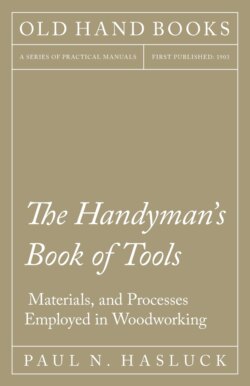Читать книгу The Handyman's Book of Tools, Materials, and Processes Employed in Woodworking - Paul N. Hasluck - Страница 106
На сайте Литреса книга снята с продажи.
DISSTON ON SELECTING HAND SAWS.
ОглавлениеThe following are some of Disston’s notes on purchasing saws: In selecting a hand saw, see that it hangs right; grasp it by the handle and hold it in position for working, and then try if the handle fits the hand properly. These are points of great importance. Many saw handles are made of green wood; they soon shrink and become loose, the screws standing above the wood. An unseasoned handle is liable to warp and make the saw untrue. Next try the blade by springing it; then see that it bends evenly from point to butt in proportion as the width of the saw varies. If the blade be too heavy in comparison with the teeth, the saw will never give satisfaction, because it will require much more power to use it. A narrow true saw is better than a wide true saw—there is less danger of dragging or creating friction. The thinner the saw blade is, the better. Always try a saw before buying it. See that it is well set and sharpened, and has its toothed edge rounding; hold it so that the light strikes it fairly, and any imperfections in grinding or hammering are at once detected.
